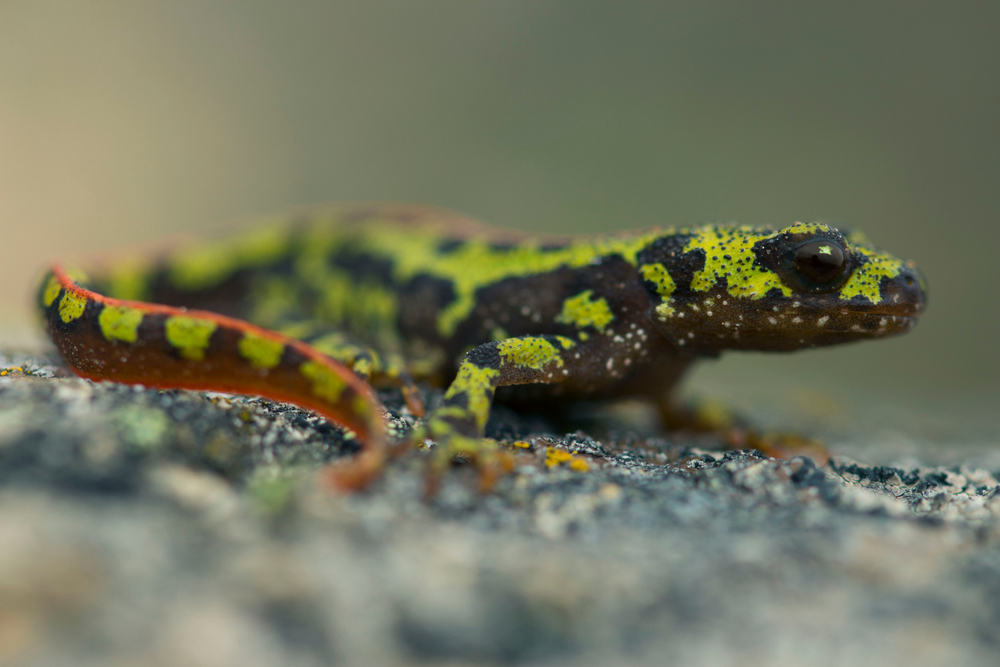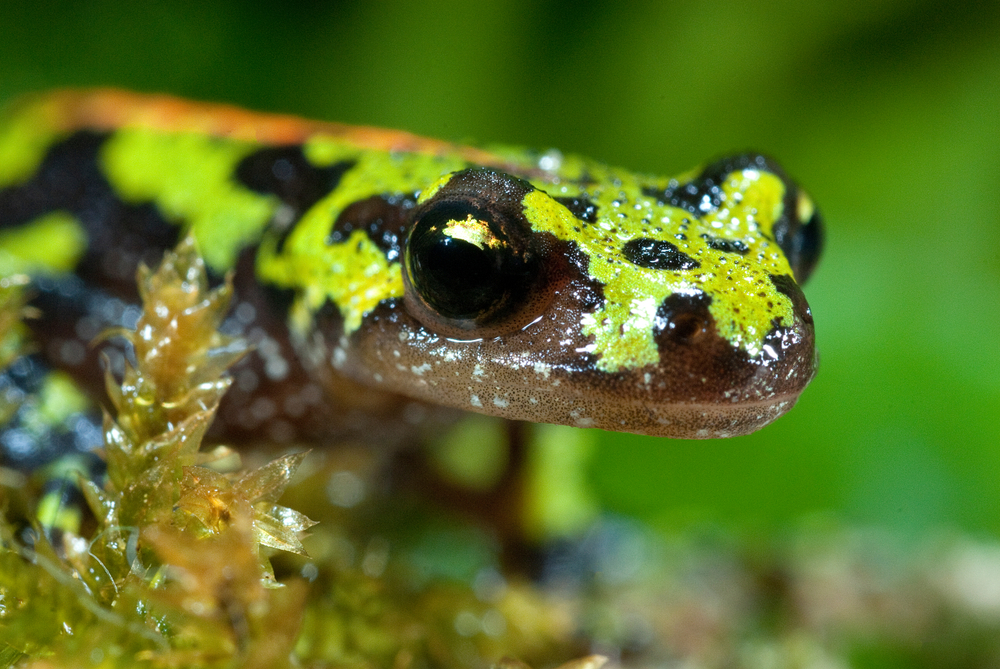The marbled newt (Triturus marmoratus) is one of the most beautifully patterned newts on Earth. It is native to the Iberian Peninsula and western France, where it occupies forested areas and sloping hills. These primarily-terrestrial newts are adapted to the cool climates they inhabit and thus, spend much of their time nestled into refugia making them extremely cryptic.

Marbled Newt husbandry
However, for those happy to maintain a species that is only visible through spring and the occasional warm night, marbled newts are low-maintenance. A 60 x 45 x 45cm glass terrarium will comfortably house a small group. Low-level UV lighting can help regulate circadian rhythms, but temperatures should not exceed 21℃.
Within the terrarium, three options are available: a paludarium that will comfortably house the newts for their entire life, a fully-terrestrial setup with a large water dish that will fulfil the adults’ needs or an aquarium which is good for breeding but must contain adequate land area.
Each approach has pros and cons, but the keeper should keep several things in mind: Marbled newts will hibernate through winter when temperatures drop below 2℃. They will breed in spring and should be provided with clean water to do so. Some keepers will keep their newts in a very basic tub with a thick substrate layer and swap to an aquarium in spring. Others prefer to create a 50/50 land to water setup that has higher associated costs, but less maintenance strategy.
Marbled newts are insectivorous and should be offered a varied diet of insects and mollusks dusted in a multivitamin and calcium supplement.
The IUCN categorises the marbled newt as ‘Vulnerable’. They are threatened by climate change, deforestation and the spread of a salamander Chytrid fungus known as Bsal. To prevent the spread of Bsal fungus, Caudata cannot be imported into the UK. However, most newt keepers will breed their animals as it showcases perhaps the most interesting parts of their biology, so marbled newts are seasonally available.
